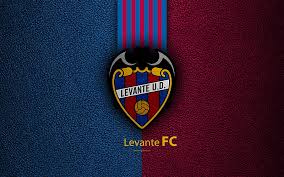Levante FC is a professional football club based in Valencia, Spain. Founded in 1909, the team has a rich history and a passionate fan base. Known for its vibrant blue and garnet colors, Levante FC has become an integral part of Spanish football culture. The club’s journey through various divisions of Spanish football reflects not just its resilience but also the fervor of its supporters. This blog post will delve into the history, evolution, challenges, and triumphs of Levante FC, providing a comprehensive look at what makes this club unique Link M88.
The Historical Journey of Levante FC
The story of Levante FC begins over a century ago, in a bustling city that has witnessed numerous changes throughout its history. Understanding the club’s origins can provide valuable context about its present-day identity.
Early Years: Formation and Initial Struggles
Levante FC was founded on September 9, 1909, making it one of the oldest football clubs in Spain. The club initially struggled to find its footing in the competitive landscape of Spanish football.
In these formative years, Levante participated mainly in regional competitions. The lack of resources and established players posed significant obstacles, yet the club’s commitment to nurturing local talent laid the groundwork for future success. Many clubs were facing similar struggles during this period, but Levante’s community-driven approach fostered strong local support.
As the world transitioned into the 20th century, Levante FC began to gain momentum. In the 1920s, the club joined the newly formed Spanish Football Federation, allowing them to compete in official national tournaments. This leap marked a critical turning point, propelling Levante into a new era of competitive football.
The Post-War Era: Resilience and Rebuilding
The aftermath of the Spanish Civil War presented countless challenges for many clubs, including Levante FC. During the late 1930s and early 1940s, the club faced significant financial difficulties which culminated in temporary dissolution. However, with the spirit of resilience characteristic of the Levantine people, the club was reestablished in 1941.
The reformation of the club led to a renewed focus on local youth development and enhancing fan engagement. During the 1940s and 1950s, Levante FC experienced fluctuations, alternating between La Liga and Segunda División, yet the unwavering support from its fans helped create a sense of stability amidst uncertainty.
This period of rebuilding and resilience had profound implications for the club’s identity. The emphasis on community involvement and local pride started to shape the ethos of Levante FC, establishing bonds that would last for generations.
The Golden Age: Climbing to Prominence
The 1960s and 1970s are often referred to as the golden age of Levante FC. With a talented roster and innovative coaching strategies, the team managed to secure its place among the elite of Spanish football.
One of the standout figures during this time was Enrique Pérez, known affectionately as “Quino.” His remarkable playing style and leadership qualities propelled Levante through several successful seasons, culminating in a strong challenge for league titles.
Throughout the 1970s, the club continued to build on its successes, attracting skilled players from across Spain. Notably, Levante FC’s growing reputation drew attention from international talents, marking the beginning of a more globalized approach to player recruitment.
